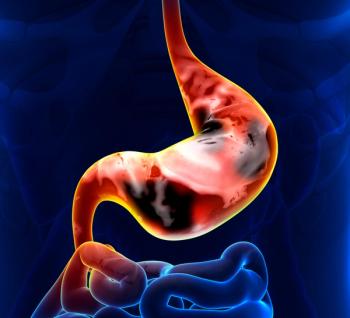
Neoadjuvant Atezolizumab Yields High DFS in Muscle-Invasive Urothelial Cancer
Neoadjuvant atezolizumab as a treatment for muscle-invasive urothelial cancer of the bladder yielded a high disease-free survival.
A high disease-free survival (DFS) and promising long-term outcomes were observed in patients with muscle-invasive urothelial cancer of the bladder following treatment with neoadjuvant atezolizumab (Tecentriq), according to a study published in European Urology.
The 2-year DFS was 68% (95% CI, 58%-76%) and the overall survival was 77% (95% CI, 68%-85%) following treatment with neoadjuvant atezolizumab. Patients had a partial complete response (pCR) rate of 31% (95% CI, 21%-41%), and the 2-year DFS for patients who achieved pCR was 85% (95% CI, 65%-94%). The relapse-free survival (RFS) did not correlate with baseline PD-L1 (HR, 0.60; 95% CI, 0.24-1.50; P = .26) or tumor mutational burden (HR, 0.72; 95% CI, 0.31-1.70; P = .46). RFS was correlated with high baseline stromal CD8 positivity (HR, 0.25; 95% CI, 0.09-0.68; P = .007) and high post-treatment fibroblast activation protein (HR, 4.1; 95% CI, 1.3-13.0; P = .01).
A total of 95 patients enrolled on the study, 87 of whom received a radical cystectomy. In terms of baseline characteristics, 74% of patients had T2 disease and 75% had an ECOG score of 0. The median follow-up was 25 months (95% CI, 25-26). Overall, 22 patients relapsed or died from relapse, and 22 died due to any cause. During treatment and the surgical period, there were 3 non-cancer-related deaths from non-treatment-related aspiration pneumonia, immune-related myocardial infarction, and cardiogenic shock.
Poor DFS was correlated with several factors, including higher T stage at baseline (HR, 2.4; 95% CI, 1.0-5.6; P = .045), cystectomy (HR, 13.0; 95% CI, 3.7-43.0; P <.001), and node-positive disease at surgery (HR, 6.6; 95% CI, 2.4-18.0).
In post-treatment samples, investigators noticed an increase of CD39/CD8-positive T cells in responding tumors (P <.05). There was a loss of major histocompatibility class (MHC) I in 11% of samples. However, there was no statistically significant correlation between MHC class I loss and response or relapse. Additionally, high MHC class I at baseline was not a predictor of increased RFS (HR, 2.3; 95% CI, 0.30-17.0; P = .424).
There was no association between FOXP3 at baseline and relapse (rate ratio, 0.87; 95% CI, 0.37-2.0; P = .74) or RFS (HR, 0.86; 95% CI, 0.33-2.2; P = .75), although it was correlated with response before and after treatment. Additionally, there was a positive correlation between baseline CD8 and FOXP3 expression (r = .40).
At baseline, 63% of patients were circulating tumor DNA (ctDNA) positive at baseline, which was significantly associated with increased PD-L1 expression in the tumor-infiltrating immune cell, with 5% or more of immune cells (P = .008) and tumor cell staining with 5% or more of tumor cells (P = .007). A total of 47% of patients were ctDNA positive at the post-neoadjuvant timepoint, which significantly correlated with lymph node status (P = .02) and T stage at surgery (P = .0005) and T stage at surgery (P = .0005). During the post-cystectomy timepoint, 14% of patients were ctDNA positive.
Among the patients who were ctDNA positive at baseline and became ctDNA negative after surgery (n = 3), all achieved a pCR after surgery, in addition to 2 other patients who were ctDNA positive at baseline and the post-neoadjuvant timepoint who cleared their ctDNA following surgery.
Patients during the post-surgery timepoint who were ctDNA positive had higher rates of relapse than those who were ctDNA negative (HR, 78; P <.001). Investigators did not observe relapse events for patients who were ctDNA negative at baseline and at the post-neoadjuvant time point. Additionally, those who were PD-1–positive were more often ctDNA positive, and outcomes were poor for those who were ctDNA positive and PD-L1-negative.
Reference
Szabados B, Kockx M, Assaf ZJ, et al. Final results of neoadjuvant atezolizumab in cisplatin-ineligible patients with muscle-invasive urothelial cancer of the bladder. Eur Urol. Published online May 14, 2022. doi:10.1016/j.eururo.2022.04.013
Newsletter
Stay up to date on recent advances in the multidisciplinary approach to cancer.































































































